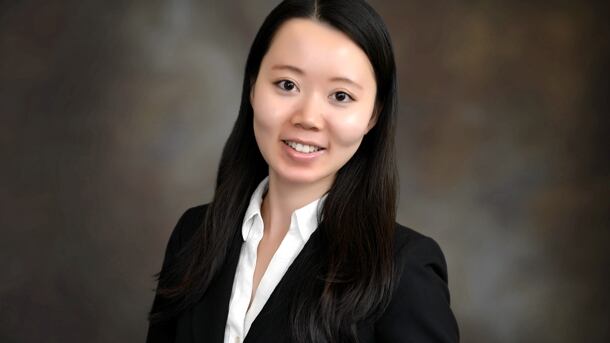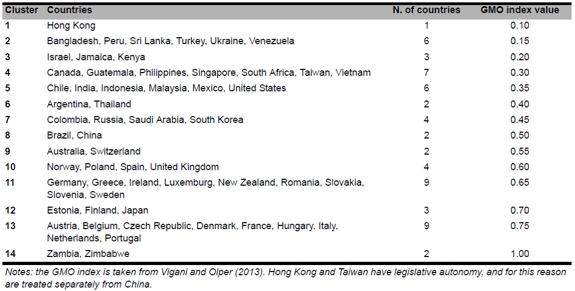On December 15 last year, Taiwan passed a bill to prohibit genetically modified foods from school cafeterias, which will take effect in spring 2016 at the earliest.

According to the bill, amendments will be made to the School Health Act that raw ingredients and processed foods directly containing genetically modified organisms will be banned from school menus.
The commercialised cultivation of GMO crops is not allowed in Taiwan. Instead, genetically modified ingredients—especially soy and corn—are imported from countries such as America.
As the seventh largest export market for American food and agricultural products, as of 2014, genetically modified bulk and intermediate commodities accounted for 40% of Taiwan’s imports from the country, which consumes over 8m bushels of soybeans annually, with 7.2m of these being genetically modified imports from America.
As in other parts of east Asia, soy and soy food (such as tofu and soymilk) have long been consumed in Taiwan, and December’s bill would certainly impact on sourcing such ingredients in school meals.
Other ingredients that often appear on school menus, such as corn and salmon, would also be greatly affected. Finding ingredients from non-GM sources will lead to a price increase of about NT$5 (USD$0.15) per meal, with the cost to the government estimated at around NT$235.8m (USD$7.05m) in additional subsidies for underprivileged students’ school meals.
The passing of this bill, backed by a push from the Homemakers United Foundation (HUF), an organisation of housewives concerned about environmental protection in Taiwan, has brought school meals into spotlight.
In May 2013, this group voiced their opinion in a petition to demand that all schools remove items made with GM soybeans from school lunches. They argued that they did not want their students exposed to the risks that GMOs might bring, though the subject of whether these affect the human body is still controversial. They also claimed that allergies and effects on the immune system could result from GMO consumption.
Labeling of GMOs in Taiwan
Prior to passage of the bill, Taiwan had taken a series of steps to tighten regulations on its GMO labelling. In March 2014, the government passed a law that mandated the labelling of all foods containing GM ingredients and set a ceiling of GMO content at 0.9% to reflect regulations in the European Union, which has long been known for its strict GMO stance.
This threshold was later modified to 3% in June 2014, and applied to packaged foods only, though it is still lower than the 5% that was previously implemented.
Subsequently, in May 2015, the Taiwan Food and Drug Administration issued three amendments of the GMO labelling requirements for packaged foods, food additives and unpackaged foods, further expanding the scope of GMO labelling from packaged foods made with GM soybean or corn, to a broader range including food additives and packaged/unpackaged foods directly or indirectly containing GMOs.
Accordingly, for highly processed products that do not contain GMOs, DNA fragments or transgenic proteins, but use GMOs in manufacturing (such as cooking oil made from GMO soybean or corn), a label specifying a GMO ingredient’s origin is mandated, with specified labelling phrases required.
Taiwan’s cautious stance on GMOs
Has this bill declared Taiwan’s position in completely banning GMOs? This is probably not the case for a variety of reasons.
Only raw materials and food products directly containing GMOs are banned from school meals according to the bill, which means that highly processed products that do not contain GMOs, DNA fragments or transgenic proteins are exempt. Furthermore, it is still uncertain whether local ingredient suppliers have enough non-GMO ingredients in stock without increasing imports from overseas.
The rise in the cost of ingredient sourcing and school meal subsidies brings further issues for the government, and for most students, school meals mean only lunch; they have breakfast and dinner outside of school, which the bill does not address.
The passage of the bill, largely driven by rising consumer demand, signals a cautious stance from the government on GMOs, and is timed politically. Because the presidential election in January 2016 was just around the corner at the time lawmakers voted on the bill, no party dared to upset the electorate, the HUF and consumer rights groups by opposing its passage.
On the backstage also stands a government with a conservative outlook on GMO regulation. The dilemma of Taiwanese papaya growers serves as a good example of this, from when they were facing declining profits resulting from two destructive papaya viruses.
While researchers had developed a super-papaya with modified genetics resisting both viruses, Taiwan’s ban on GMO commercialisation meant their findings were locked up inside laboratories and the crop’s field application was prohibited.
Officials argued that potential export markets for the papaya shared the same politically cautious stance. For example, Japan banned GM papaya imports from Hawaii resulting in a loss in sales for Hawaiian papaya businesses. Therefore, the Taiwanese government was reluctant to allow the commercialisation of GM papaya, after weighing the benefits and losses that might follow.
Comparison with other countries
Taiwan often views Japan as a model for rules and regulations on new or novel issues for historical reasons (the country ruled Taiwan from the late nineteenth to early twentieth century) and similarity on geological and environmental characteristics.

Japan’s ban on GM papaya greatly affected Taiwan’s stance on GM crop exportation. Worldwide, Japanese GMO regulations are deemed as less strict than those of the EU, but more stringent than in America. When applying for regulatory approval, the same GM commodity would be approved by the Japanese government after America but ahead of the EU (see Table 1).
An index developed by Vigani et al with data collected in 2007 clustered Taiwan on the loose side of GMO regulation (see Table 2). However, as GMO regulations in Taiwan evolve over the years, its score should have soared to the more restrictive side due to the aforementioned series of regulatory measures taken in the recent years.

The EU, with its long history of vigorously restricting the use of GMOs, has radiated its influence worldwide, not least to Taiwan. Additionally, several Taiwanese food safety scandals in 2014 that involved economic adulteration have spurred the media, some small consumer groups and several legislators to call for more stringent food regulations from the government.
Failing to reflect Japan’s regulations may result in there being criticisms of these groups being too “soft” on food safety regulation, though GMOs may not involve food safety itself.
- Dr Wendan Wang is an associate scientist at Burdock Group with over six years' experience in conducting pre-clinical studies within food, nutrition and toxicology. She holds a bachelor’s degree in food quality and safety from China Agricultural University and earned her doctorate in food science and human nutrition from University of Illinois at Urbana-Champaign.
